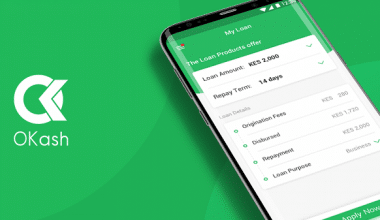Loans are a fundamental financial instrument that empowers individuals and businesses to realize their goals and ambitions. The service offers financial assistance for various purposes, such as acquiring a residence, initiating a business idea, or pursuing advanced education. Loans provide essential financial assistance to transform these aspirations into tangible achievements. However, it’s not enough to get your loan application approved and funds delivered, there’s a need to manage the loan until the full repayment is made. The process of managing and administering loans is referred to as “loan servicing.” Loan servicing is a specialized function that involves the administration and management of a loan on behalf of the lender. This guide provides an in-depth examination of the different types of loan servicing, including specialized student loans and federal loans. It also highlights the numerous benefits associated with loan servicing and a few examples to crystalize what it’s about.
What Is Loan Servicing?
Loan servicing refers to the administrative aspects of managing a loan on behalf of the lender or investor. When a loan is originated, the lender often assigns the servicing rights to another company or entity that specializes in loan servicing. The loan servicer is responsible for a range of tasks related to the loan. This generally includes collecting payments, managing customer inquiries, and ensuring compliance with regulations. Loan servicing plays a crucial role in the lending industry, ensuring smooth loan administration, timely payment collection, and customer support. Whether handled internally by the lender or outsourced to a third-party company, effective loan servicing contributes to the overall success of the loan portfolio
Types of Loan Servicing
The following are the various types available:
- Mortgage Loan Servicing: The most common type of loan servicing is related to mortgage loans. Mortgage loan servicers handle tasks such as collecting monthly payments, and managing escrow accounts for taxes and insurance. It also includes handling delinquencies or defaults.
- Student Loan Servicing: For federal and private student loans, it involves billing borrowers, processing payments, and providing customer support. Student loan servicers also assist borrowers with repayment plans and loan consolidation.
- Auto Loan Servicing: Auto loan servicers manage auto loan accounts, including processing payments, addressing customer inquiries, and managing issues related to defaults or repossessions.
- Personal Loan Servicing: Personal loans, whether from banks or online lenders, may be serviced by a separate entity that handles payment collection and customer service.
- Commercial Loan Servicing: This pertains to loans taken out by businesses or commercial entities. The servicer handles tasks such as billing, payment processing, and managing any defaults.
Benefits of Loan Servicing
The following are some of its primary benefits:
- Efficient Payment Collection: A loan servicer ensure that payments are collected promptly and accurately, reducing the risk of delinquency or default.
- Customer Support: Borrowers can get assistance from these companies regarding their loans, payment options, and other related inquiries.
- Escrow Management: For mortgages, loan servicers handle the escrow accounts, ensuring that property taxes and insurance premiums are paid on time.
- Regulatory Compliance: These companies help lenders stay compliant with relevant regulations and laws governing the lending industry.
- Risk Mitigation: It minimizes the risk of errors in loan management and reduces the chances of non-compliance with loan terms.
- Time and Resource Savings: Lenders can focus on their core business of lending, while the servicing companies take care of administrative tasks.
- Technology and Expertise: These companies often have access to advanced loan management software and experienced personnel, improving efficiency and accuracy.
Examples of Loan Servicing Companies
Below are examples of some of the companies that offer servicing services:
- Sallie Mae
- Wells Fargo
- Navient
- Mr. Cooper
- PNC Bank
How Loan Servicing Works
Below is generally how it works;
- Payment Collection: Loan servicers collect monthly or periodic loan payments from borrowers, which include principal, interest, and any applicable fees.
- Account Management: Loan servicers maintain detailed records of the borrower’s account, including the outstanding balance, payment history, and any changes to the loan terms.
- Customer Support: Loan servicers address borrower inquiries, provide assistance, and handle issues related to loan repayment.
- Escrow Management: In some cases, loan servicers manage escrow accounts, which hold funds for property taxes, insurance, and other expenses related to the loan collateral (e.g., property).
- Reporting: Loan servicers generate and provide periodic statements to borrowers, outlining the loan balance, payment history, and other relevant account information.
- Default Management: In the unfortunate event of borrower default, loan servicers may handle collections, foreclosure processes, or alternative solutions to resolve the situation.
Student Loan Serving
Student loan servicing is the formal practice of overseeing and executing the management and administration of student loans on behalf of the lender or loan holder. When a person takes out a student loan to pay for their education, a designated company typically manages the loan and is in charge of many loan-related tasks.
Types Of Student Servicing
There are two main types of student loan servicing: Federal and private.
#1. Federal Loan Servicing
Federal servicing refers to the management and administration of student loans issued by the U.S. Department of Education. These loans are provided to eligible students and their parents to help finance higher education. There are several types of federal student loans, and each may have different servicing requirements. The following are the main types of federal loans and their respective loan servicers:
- Direct Subsidized and Unsubsidized Loans: For eligible undergraduate and graduate students, the federal government directly issues these loans. The loan servicers for Direct Subsidized and Unsubsidized Loans are designated by the U.S. Department of Education. Some of the major loan servicers include Navient, Nelnet, FedLoan Servicing (PHEAA), Great Lakes Educational Loan Services, Inc.
- Direct PLUS Loans: Direct PLUS Loans are available to graduate students and parents of dependent undergraduate students. The U.S. Department of Education also designates loan servicers for Direct PLUS Loans, who may offer the same services as Direct Subsidized and Unsubsidized Loans.
- Federal Perkins Loans: Federal Perkins Loans are a need-based program available to undergraduate and graduate students with exceptional financial needs. Generally, the educational institution itself is responsible for servicing these loans.
Federal Family Education Loan (FFEL) Program Loans: While the FFEL
#2. Private Loan Servicing
Private servicing refers to the management and administration of student loans provided by private lenders, such as banks, credit unions, and other financial institutions. Generally, it doesn’t involve the federal government, and each lender sets its terms and conditions. Each private lender may have its own loan servicing operations or contract with third-party loan servicers to manage their student loans. Unlike federal loans, which offer borrower protections and various repayment options, private loans often have more varied terms and conditions. Private loan servicers handle tasks such as billing, payment processing, and customer service on behalf of the private lender.
Federal Loan Servicing
This refers to the management and administration of loans issued by the federal government. In the context of the United States, this typically includes various types of federal loans, such as student loans, small business loans, agricultural loans, and housing loans. The U.S. Department of Education, the Small Business Administration (SBA), the U.S. Department of Agriculture (USDA), and other government organizations provide these loans.
Federal servicing involves several important tasks, including:
- Loan Disbursement: The process of providing funds to the borrower after the loan application has been approved and all necessary documentation is in place.
- Billing and Payment Processing: Loan servicers are responsible for sending out billing statements to borrowers, detailing the amount due and the due date. They also process loan payments made by borrowers
- Customer Service: Loan servicers handle borrower inquiries, address concerns, and provide assistance throughout the loan repayment period
- Record Keeping: Maintaining accurate and up-to-date records of loan disbursements, payments, and any other relevant information related to the loan
- Loan Repayment Plans: Assisting borrowers in selecting appropriate repayment plans that suit their financial situations, including income-driven repayment plans for federal student loans.
- Loan Forgiveness and Discharge: Providing information and assistance to borrowers regarding loan forgiveness programs or loan discharge in certain qualifying situations
- Default Management: Handling delinquent loans and implementing strategies to prevent or address loan default.
- Escrow Services: In some cases, loan servicers manage escrow accounts to handle property tax and insurance payments for mortgage loans.
Specialized Loan Servicing
Specialized Loan Servicing (SLS) is a loan servicing company headquartered in Denver, Colorado, in the United States. It is a subsidiary of Computershare Limited, an Australian-based financial services company. SLS specializes in servicing residential mortgages and managing the day-to-day operations and administrative tasks associated with these loans. The loan owners could be financial institutions, investors, or mortgage-backed securities issuers. The company’s primary focus is on providing mortgage servicing solutions to homeowners and ensuring efficient management of their mortgage accounts.
Responsibilities of Specialized Loan Servicing
The following are some of the key responsibilities of SLS:
- Collecting Payments: SLS collects monthly mortgage payments from borrowers, which include the principal amount, interest, and, if applicable, amounts for property taxes and insurance premiums.
- Customer Service: The company acts as the main point of contact for borrowers, assisting them with inquiries and concerns and providing support throughout the life of the loan.
- Escrow Management: For loans with an escrow account, SLS manages the funds held in escrow and makes payments for property taxes, homeowners insurance, and other necessary expenses on behalf of the borrower.
- Loan Modifications: In certain cases, such as financial hardships, SLS may work with borrowers to modify the terms of their loans, potentially adjusting interest rates or extending the loan term to make the mortgage more manageable.
- Default Management: If a borrower falls behind on payments, SLS may initiate loss mitigation efforts, such as exploring alternatives to foreclosure, like loan forbearance, short sales, or loan modifications.
- Investor Reporting: SLS provides regular reports to loan owners or investors, detailing the performance and status of the loans they service.
What Is the Role of Lending Services?
Lending services play a crucial role in the economy by providing access to capital for individuals, businesses, and governments. They promote economic growth by enabling investments and supporting consumer spending. Lenders generate revenue and profits through interest charges while diversifying risk across multiple lenders. These services act as financial intermediaries, fostering financial inclusion and influencing monetary policy. However, responsible lending and risk management are essential to maintaining stability and integrity in the lending industry.
What is Loan Origination and Loan Servicing?
Origination focuses on assessing the borrower’s creditworthiness and approving the loans, while servicing involves managing loans after it has been disbursed to the borrower to ensure smooth repayment and customer support. Origination and servicing are two essential stages in the lifecycle of loans. They represent distinct processes involved in the lending industry. Loan origination refers to the process of creating and processing a new loan application. It starts when a borrower applies for a loan, and it concludes when the lender approves and disburses the loan amount. On the other hand, loan servicing refers to the ongoing management and administration of a loan after it has been originated and disbursed to the borrower. This process involves collecting loan payments, maintaining borrower records, and handling customer service related to the loan.
What Are the Two Types of Lending?
The two main types of lending are consumer lending and commercial lending.
What Is the Difference Between Lending and Borrowing?
Lending involves providing money or assets to someone else, while borrowing involves obtaining money or assets from someone else. Lenders assume the risk of not being repaid, and borrowers take on the obligation to repay the borrowed amount according to the terms of the loan agreement.
What Are the 4 Steps in the Loan Application Process?
The four steps in the loan application process are;
- Application Submission
- Loan Underwriting and Evaluation
- Loan Approval or Rejection
- Loan Approval or Rejection
- Lenders for Poor Credit: Best Options.
- HOW TO GET A BANK LOAN: All You Need to Know(
- BEST STARTUP BUSINESS LOANS IN 2023
- Application Letter For Loan: How To Write A Loan Request Application In Nigeria






